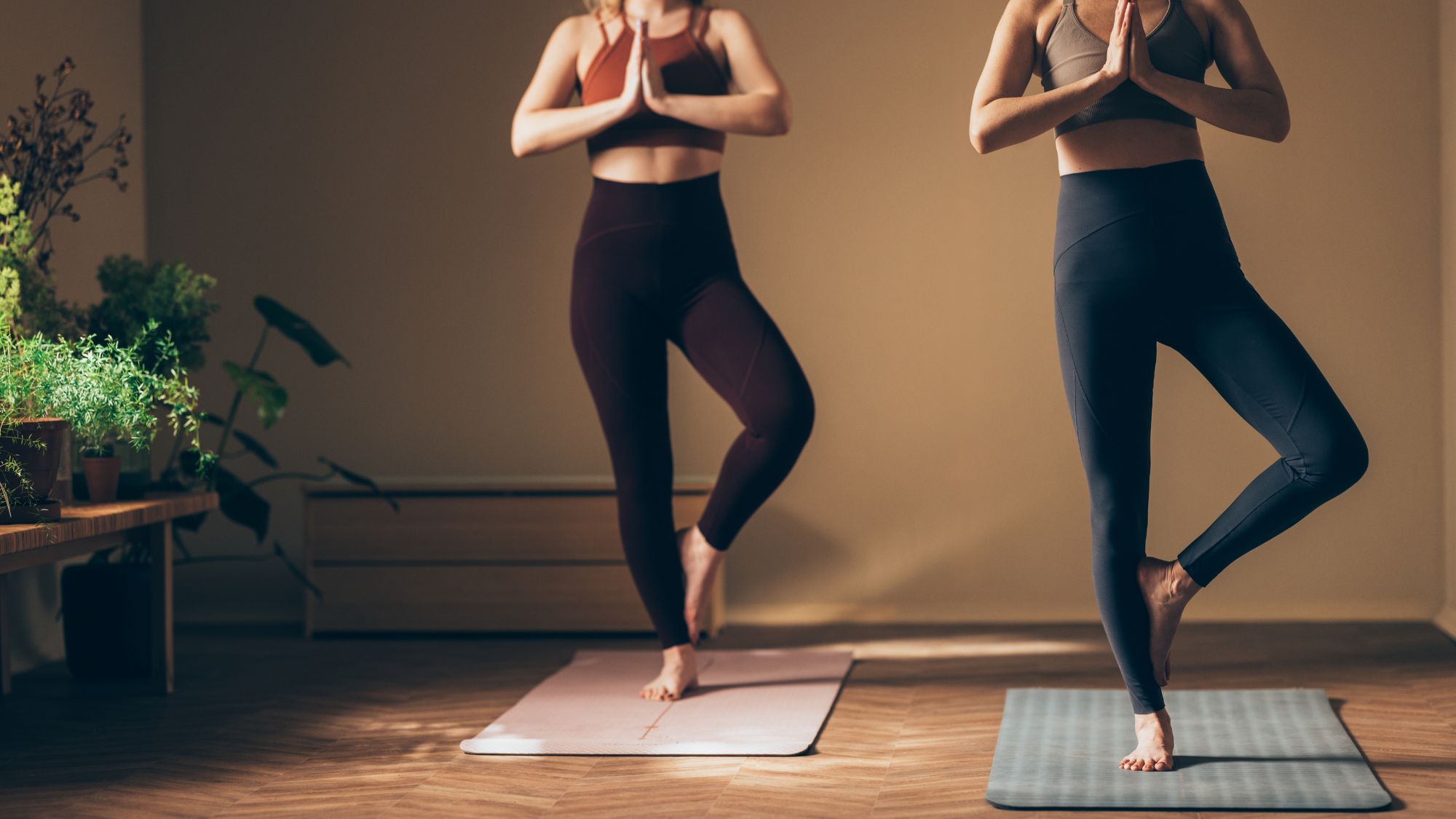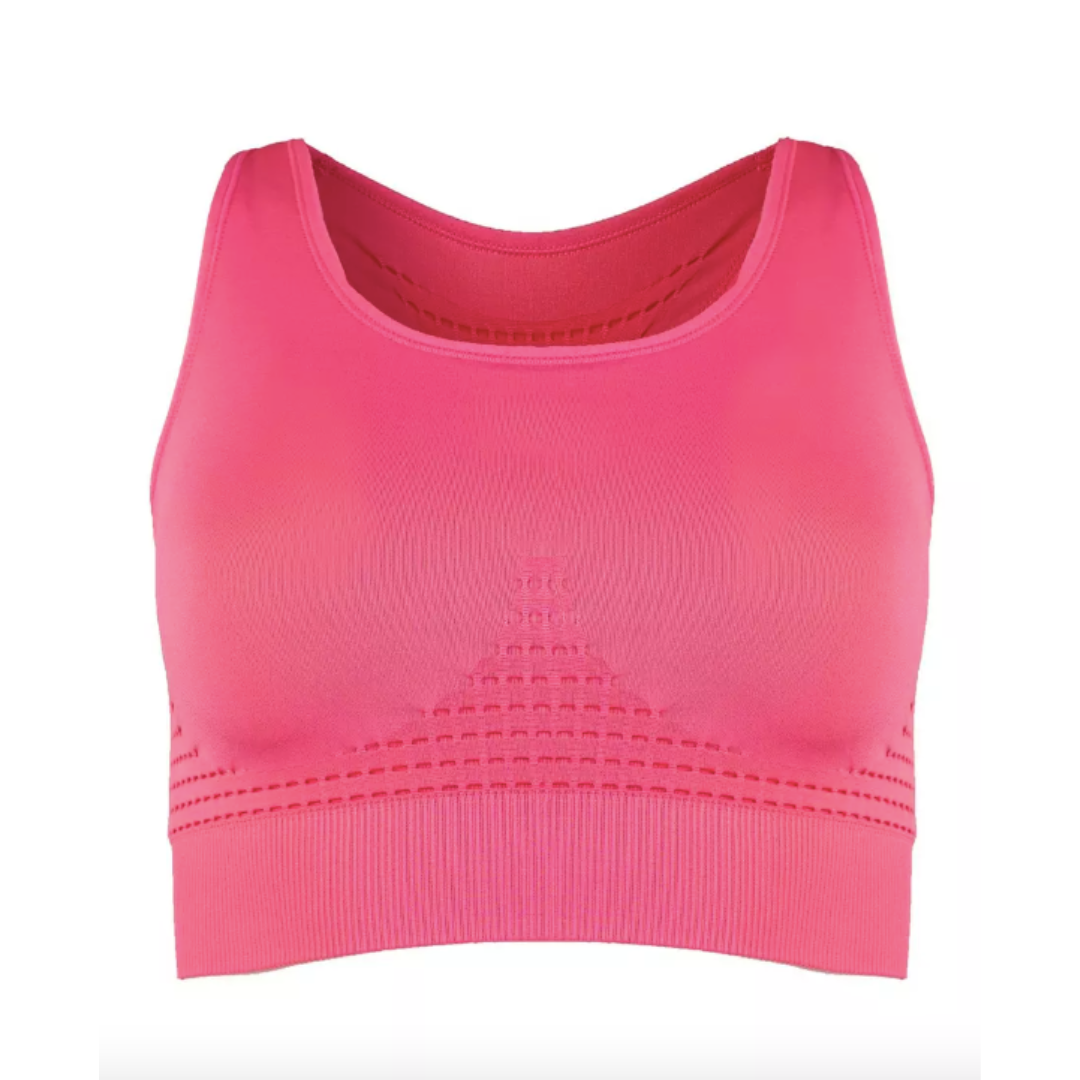Unilateral exercises promise to boost your balance in no time - and it's confirmed that these are the 7 best
Make balance your superpower.


You'd be forgiven for only thinking about your balance while stumbling around in heels or attempting to stay upright on a crowded tube, but mastering your balance is super important. From improving your coordination and reducing the risk of injury to (yes, really) helping you to live longer, balance pretty much tops the list of things to work on. Not sure where to start? Introducing unilateral exercises, in short, moves that utilise just one side of the body.
If you've never really considered how to improve your balance before, you're in the right place - because unilateral moves are one of the simplest ways to do so, as well as being easy to incorporate into your workout routine and totally free.
Wondering why you'd bother when you can just workout both sides at once? We get it, time is precious. But unilateral training is key for a balanced and comprehensive fitness regime. "Unilateral moves have so many benefits and are great to incorporate into any training plan," says personal trainer and founder of Building Body Confidence, Emma Simarro. "They improve balance and stability, reduce the risk of injury, strengthen our core and will correct any imbalances that we can pick up from everyday life, such as carrying children on one hip. But importantly, many movements we do every day are technically unilateral, so training this way will focus strength and improve everyday movement."
Not only this, research (such as this study, published in the Journal of Sports Science & Medicine) shows that unilateral training can enhance athletic performance - so, whether this is smashing your 5k PB or simply running around after your kids (or both!), unilateral moves are a great place to start.
Still not convinced? Now is probably a good time to refresh our minds with the benefits of strength training more generally. Whether it's uni- or bilateral, any kind of weight training is particularly beneficial for women, helping to improve bone density (super important during peri-menopause, in particular), prevent muscle mass decline (aka sarcopenia) and prevent obesity as we age.
Indeed, the benefits of strength training aren't limited to the duration of the session itself - studies (like this one, published in the Journals of Gerantology) show that positive changes to our bodies' cells while exercising linger for hours post-workout, too. So you're effectively still reaping the rewards of your sweat session while binging Emily In Paris on your sofa. Win!
For more details on unilateral exercises (the whys and how-tos), keep scrolling for our expert-led guide. And if you're entering your strength training era (or indeed, firmly in it) then don't forget to check out our guides to strength training for beginners, low-impact strength training and functional strength training, here.
Celebrity news, beauty, fashion advice, and fascinating features, delivered straight to your inbox!
Unilateral exercises are the key to boosted balance - your guide
What are unilateral exercises?
"Unilateral exercises are movements that work one side of the body at a time," explains personal trainer and founder of Paola's Body Barre, Paola Di Lanzo. "Unlike bilateral exercises, which involve both sides working together (like squats or bench presses), unilateral exercises target one limb independently, such as a single-leg squat or a one-arm dumbbell press."
"Instead of using both legs or arms, like in a squat or bench press, unilateral exercises focus on individual limbs," personal trainer at UNTIL, Tomi Akande, continues. "They're incredibly beneficial for anyone looking to correct strength imbalances, improve stability, and build coordination, as they force each side to carry its own weight without relying on the other for assistance."
We're talking about moves such as:
- Single leg squats
- Lunges
- Single arm rows
- Single arm dumbell curl
- Dead bugs
- Side lunges.
What are the benefits of unilateral exercises?
Of course, it's important to train the whole body and not just one side, but that said, unilateral exercises do yield some particular benefits.
Let's dig into the detail.
1. They boost balance
Worried you're a little wobbly? Unilateral moves are the exercise for boosting balance, as you're literally having to stabilise your other body parts as you perform them.
"Unilateral exercises are highly beneficial for improving balance, coordination, and muscle symmetry," says Di Lanzo. "They help isolate and strengthen each side of the body individually, which can enhance overall performance and reduce the risk of injury. By focusing on one side at a time, these exercises can also engage stabilising muscles more effectively."
And hear this: balance training isn't just for older adults, it's never too early to start. Research (such as this 12-year study, published in the British Journal of Sports Medicine) shows that the ability to balance not only reduces your risk of falls and injury (as you're less likely to fall over), but it's also a crucial marker of overall health and longevity.
2. They're great for your brain
Unexpectedly, but perhaps most importantly, unilateral exercises are excellent for our brains.
"Unilateral moves are amazing brain training because they require increased focus, coordination, and balance, engaging both hemispheres of the brain to improve neural connections and motor skills," agrees Di Lanzo. "Remember that strength training is both a physical and mental workout!"
3. They improve body awareness
Unilateral training is amazing for increasing our awareness of how we move in space - also known as proprioception. While it's not necessarily something you think about all the time, if you're the type of person who is constantly whacking your elbows on doorframes, walking into things and tripping up (it's me, hi) then you'll benefit hufely from unilateral moves - and trust us, your elbows (and knees) will thank you for it.
4. They can correct muscle instabilities
If you're a seasoned exerciser, you're probably aware that most of us have a dominant side - the side where moves just seem easier and more fluid - and while this is normal, it's not necessarily optimal for a well-balanced, functional body.
"Unilateral exercises help to bring our less dominant, weaker side up to par, which is especially important in preventing injuries," says Akande. "Training both sides equally (eg to equal strength) helps avoid overcompensation, where one side of your body takes on more stress than the other. This is crucial for runners, athletes, and people recovering from injury."
Who can benefit from adding unilateral exercises into their workouts?
A simple answer to this question: pretty much everyone. "Anyone can benefit from adding unilateral exercises to their workouts," assures Akande. "Whether you’re an athlete looking to improve performance, someone recovering from an injury, or just aiming to enhance overall fitness, unilateral exercises are essential."
Looking to improve sports performance? Unilaterals are your BFF. "Professional and amateur sportspeople can benefit greatly from these exercises because they improve balance and agility—key for quick direction changes on the tennis, rugby or basketball courts, for example," Akande continues.
Not a sportsperson? Don't stop reading: unilateral exercises are excellent for functional strength, too. "Many movements we do every day are technically unilateral - think carrying things, lifting things, walking etc, so training this way will focus strength and improve everyday movement," says Simarro.
7 of the best unilateral moves to try today, according to the experts
If you're convinced to work some unilateral moves into your exercise routine, it couldn't be simpler to do (the chances are, you're already doing some). But just in case you need a helping hand, we've asked the experts for their favourite unilateral exercises - consider this your ultimate guide.
1. Single-arm dumbbell press
What? A classic strength move! Sit or stand with a dumbbell in one hand at shoulder height. Press the weight overhead, making sure to engage your core to avoid leaning to the opposite side. Lower the dumbbell back to shoulder height and repeat. Complete all reps on one side before switching to the other arm.
Why? "This unilateral exercise targets the chest, shoulders, and triceps," says Akande. "By pressing with one arm at a time, you challenge your core to keep you stablea as well, which is great for balance and strength."
How long? Aim for eight to 10 reps on each side.
2. Single-leg deadlift
What? Another classic strength move that targets all the muscles in your leg. Don't feel you have to use a weight either - try nailing your form before incorporating a weight - you'll still feel the burn!
Why? "This move is amazing for balance, core strength, and toning those glutes and hamstrings," says personal trainer at Dare To Be Fit, Grace Reuben.
How long? Try five reps on each leg to begin with.
3. Bulgarian split squat
What? Ah, the Bulgarian split squat - you'll either love them or hate them, but either way - you should be doing them! A solid compound strength training exercise, you're essentially doing a squat with one foot raised behind you.
Why? "This exercise isolates your quads and glutes, helping you build serious lower-body strength," agrees Reuben.
How long? If you can complete five in a row, respect.
4. Curtsy lunge
What? Similar to a standard lunge, but crossing one leg slightly to the side as you squat.
Why? Curtsy lunges are great for activating the quads, glutes, inner and outer thighs and your core.
How long? Try for eight to 10 reps on each side.
5. Reverse lunges
What? You know the drill: stand tall with feet hip-width apart. Step one leg back into a lunge position, lowering your back knee toward the floor while keeping your front knee over your ankle. Push through your front foot to return to standing.
Why? "The reverse lunge is fantastic for strengthening the quadriceps, hamstrings, and glutes while improving balance and coordination," says Akande. "It also minimises stress on the knees compared to forward lunges."
How long? Five to eight reps on each leg.
6. Single-leg glute bridge
What? Lie on your back with one foot planted on the ground and the other leg extended straight. Drive through your planted foot to lift your hips toward the ceiling, squeezing your glutes at the top. Lower back down and repeat.
Why? "This one is a must for activating your glutes and core while working on that all-important pelvic stability," says Reuben. "It's perfect for runners as it focuses on key muscles for running performance."
How long? Aim for eight to ten reps on each leg.
7. Single-arm dumbbell row
What? Place one hand on a bench or sturdy surface and hinge forward from the hips. Hold a dumbbell in the opposite hand, allowing it to hang straight down. Pull the dumbbell up towards your ribs, keeping your elbow close to your body. Lower and repeat, then switch sides.
Why? Perfect for targeting your back and core, this move is ideal for addressing imbalances and improving posture.
How long? Again, eight to 10 reps on each side.
Shop MC UK's go-to strength training kit here:
Can any exercise be performed unilaterally?
"Not every exercise is suitable to be performed unilaterally," says personal trainer Michael Baah. "The key factor to consider is stability. Exercises that are more stable unilaterally, like a single-arm dumbbell row, can be more effective for motor unit recruitment and strength gains."
That said, they continue that bilateral movements, like squats, often offer more stability and can allow you to lift heavier weights. It's worth considering what your end goals are if you're torn between unilateral and bilateral moves to your sessions. "Bilateral movements are better for overall strength development."
Bottom line? "A balanced combination of both is ideal for optimal results," he concludes. Variety is the spice of life, after all.

Anna Bartter is a freelance journalist who writes about health, fitness and women's lifestyle for publications including Stylist, Metro and Psychologies, among others.
She's always on a quest to find a variety of fun and functional workouts that give you the most bang for your workout buck and she's passionate about championing movement for everyone's mental and physical wellbeing.









